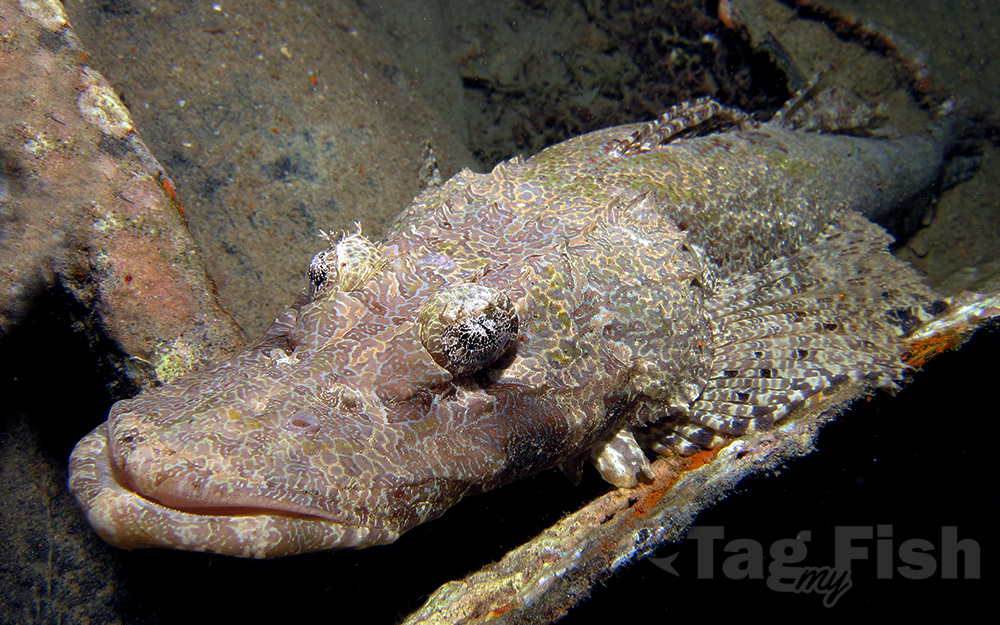Tentacled flathead
(Papilloculiceps longiceps)

Classification
General data
The tentacled flathead (Papilloculiceps longiceps), also known as the Indian Ocean crocodilefish, Madagascar flathead or longhead flathead, is a species of marine ray-finned fish belonging to the family Platycephalidae, the flatheads. This species is in the western Indian Ocean, including the Red Sea and the Mediterranean, having invaded as a Lessepsian migrant through the Suez Canal. It is the only species in the monotypic genus Papilloculiceps.
The tentacled flathead has an elongate body with a depressed head with 5 prominent nuchal spines. The ridges on the preoperculum and operculum are smaller dorsally than they are ventrally. There is a spine on the rear of the suborbital ridge which ends with a small spine. There are small spines on the preoperculum. The supraorbital is smooth with a tiny terminal spine, there is one preocular and two parietal spines. The eyes have notable papillae on their upper surfaces. The first dorsal fin has 9 spines and the second dorsal fin and the anal fin each have 11 soft rays.
The maximum published total length for this species is 70 cm (28 in), although 50 cm (20 in) is more typical.
The body is mottled brownish or greenish dorsally, whitish ventrally. There are 3 or 4 dark bands on the caudal fin and the other fins are marked with large, dark blotches.
The tentacled flathead is found in the western Indian Ocean from northern KwaZulu-Natal and Madagascar to the northern Red Sea. A single record was reported in the Mediterranean Sea off Israel in 1986. This species occurs near coral reefs on sand or rubble substrates at depths between 1 and 15 m (3 ft 3 in and 49 ft 3 in).











